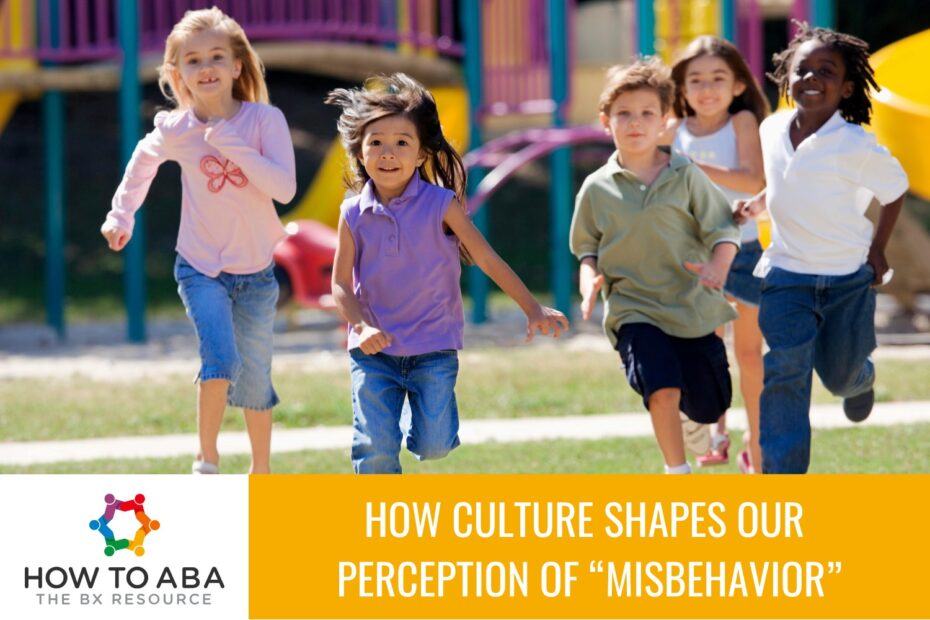Ask any teacher or therapist what “misbehavior” looks like, and you’ll get a range of answers. One might say, “Not making eye contact.” Another might point to “talking back” or “not sitting still.” But what if some of these so-called behaviors aren’t misbehaviors at all – just cultural differences?
As professionals in the ABA field, it’s essential that we look at behavior through a culturally responsive lens. Behavior never happens in a vacuum. Every action is informed by context – family expectations, community norms, religious beliefs, and lived experiences. But when we misinterpret behavior because it doesn’t fit our own cultural assumptions, we risk labeling, pathologizing, or even punishing something that isn’t truly problematic.
Let’s take a deeper look at how culture influences our understanding of behavior, and how we can approach these differences with more compassion, competence, and curiosity.
The Cultural Lens We All Carry
We’re all products of our environment. The way we were raised informs what we consider “normal,” “respectful,” or “appropriate.” But these concepts differ dramatically from one culture to another.
For example, in some Western cultures, children are taught to make eye contact with adults as a sign of respect and attentiveness. In other cultures, particularly some East Asian or Indigenous communities, averting one’s gaze is considered respectful, especially when speaking to elders. A child avoiding eye contact might be seen as “noncompliant” by one practitioner and “polite” by another.
Similarly, individualism and independence are highly valued in many Western households. Children may be encouraged to speak up, self-advocate, and make choices from an early age. In contrast, collectivist cultures might prioritize obedience, family harmony, and deference to authority. A student who doesn’t immediately express preferences may not be “defiant” or “unmotivated” – they may be behaving in a way that aligns with cultural values about humility and group cohesion.
You can find more information on this topic by checking out our CEU library, which includes Misconceptions about (Mis)behavior presented by Roberto and Lorena German. To access the CEU library, plus all of our other resources and community, become a Bx Resource Pro Member.
3 Cultural Misunderstandings in Practice
Without cultural awareness, even the most well-intentioned intervention plans can miss the mark. Here are a few common examples:
1. Communication Styles
Direct communication is praised in some cultures, while others value indirectness or nonverbal cues. A child who avoids confrontation might be seen as “withdrawing” when they’re actually using a culturally appropriate conflict-avoidance strategy.
2. Behavior Expectations at Home vs. School
A child may be allowed to move around freely at home or be raised in a more permissive parenting style. When that same child enters a structured classroom environment, they may struggle with sitting still or waiting their turn, not because they’re intentionally misbehaving, but because expectations differ.
3. Discipline and Authority
Some cultures view adult authority as unquestionable, while others encourage children to ask questions and assert their opinions. A child who “talks back” might not be showing disrespect but practicing values taught at home.
When these mismatches occur, it’s easy to misread cultural behavior as a problem behavior. But as ABA professionals, it’s our job to understand, not to judge.

From Cultural Competence to Cultural Humility
Cultural competence isn’t about memorizing every tradition or custom – it’s about remaining open, curious, and willing to learn. The field of ABA has evolved, and there’s a growing emphasis on cultural humility – an ongoing process of self-reflection, listening, and adjusting our perspectives.
Here are a few ways to practice cultural humility in your work:
Ask, Don’t Assume
If something doesn’t make sense, ask about it. Families are often happy to share cultural or familial context that might explain a behavior. Questions like, “Can you tell me more about how this is handled at home?” open the door to understanding.
Learn About Your Client’s Background
This doesn’t require a deep dive into every cultural nuance, but understanding a client’s broader cultural background can help inform your approach. Be mindful of how history, language, immigration experiences, and family dynamics shape behavior.
Examine Your Own Biases
We all have them. Take time to reflect on your own upbringing and how it shapes your view of “good” behavior. What did you learn about obedience, authority, or emotional expression? How might that color your perception of others?
Partner with Families
Culturally responsive ABA isn’t just about adapting behavior plans; it’s about collaborating with families to co-create goals that align with their values. Ask what they want for their child, and let that guide your approach.
You can find more information on this topic by checking out our CEU library, which includes Misconceptions about (Mis)behavior presented by Roberto and Lorena German. To access the CEU library, plus all of our other resources and community, become a Bx Resource Pro Member.
Reframing the Word “Misbehavior”
In ABA, we often talk about the function of behavior. But sometimes, before we get to function, we need to ask: Is this really misbehavior? Or is it simply different from what we expected?
By expanding our cultural awareness, we become better clinicians – and more empathetic humans. We learn to interpret behavior not just by how it deviates from norms, but by what it means in context. This leads to stronger client relationships, more effective interventions, and a deeper commitment to equity and inclusion in our field.
So the next time you observe a behavior that strikes you as “off,” pause and consider: What lens am I using? Whose values am I applying? And is this truly misbehavior, or simply a different way of being in the world?

